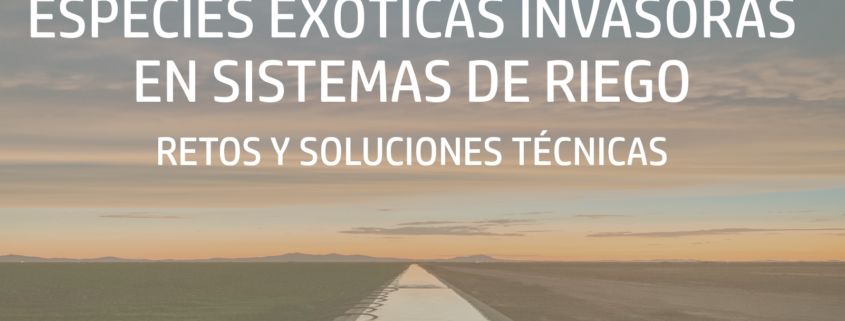Webinar Technological tools in the fight against Invasive Alien Species in irrigation
An invasive alien species (IAS) can interact in different ways with the environment into which it is introduced. These invasions are characterised, among other things, by high growth rates, high adaptive capacity, strong dispersal capacity and, in addition, a lack of natural enemies in the new ecosystem, so that they spread rapidly and effectively occupy the territory.
At the economic level, the impacts on water use have extraordinary effects, with figures amounting to millions of euros (Ludyanskiy et al., 1993). In terms of hydraulic works and infrastructures, the main problems derived from the massive presence of these IAS revolve around the more or less significant clogging of water intakes and pipes, due to the fixation of the species (“biofouling”) on the walls and bottom of tanks, gratings, pipes, etc., with the costs that this entails both in terms of operation (efficiency, interruptions, overheating, etc.) and maintenance (treatments, actions, etc.) (Palau et al., 2004) (Palau et al., 2004).
On 24 November, we organised a webinar together with the Catalan Water Partnership cluster. The webinar presented solutions and technological tools adapted to the needs with respect to the problem of invasive species in irrigation communities.
We had the following speakers:
Table 1. Current situation of Invasive Alien Species in Spain. Actions of the Public Administrations.
– Fernando Magdaleno, Deputy Assistant Director of Water Protection and Risk Management. Preventive and action strategy on invasive alien species in river basin districts.
– Jesús López Tapia, Head of the National Centre for Irrigation Technology (CENTER) of this Sub-Directorate General for Irrigation. Ministry of Agriculture, Fisheries and Food. Detection of the presence of zebra mussels through the characterisation of head losses in irrigation pipes.
– Elena Pérez, Ebro River Basin Authority. Invasive alien species in the Ebro basin; current situation of the zebra mussel.
– Verónica Gros, Guadalquivir Hydrographic Confederation. Invasive alien species in the Guadalquivir basin; current situation of the bryozoan.
What are the problems caused by IAS to irrigation communities?
– Francisco Delgado, Executive Committee of the Unión de Pequeños Agricultores y Ganaderos (UPA)-Sevilla.
– Rubén Beltrán, Irrigation Community Campés
Technical solutions to deal with invasive species. Success stories.
– Javier Bernad, Velaber Consulting
– Lourdes Díez-Antoñanzas, DIAMA
– Nuno Caiola, EURECAT
If you were unable to attend, you can watch it at this link





